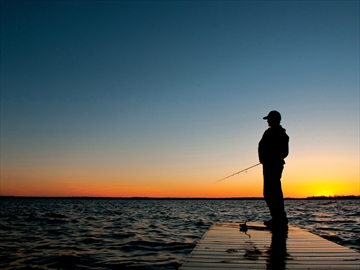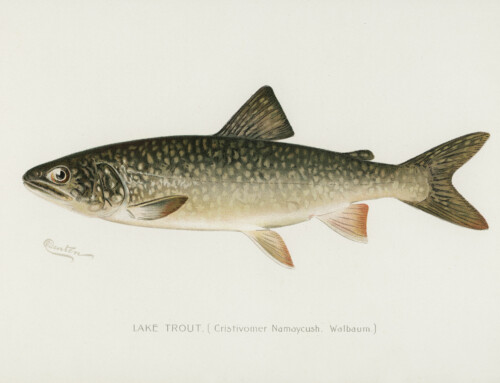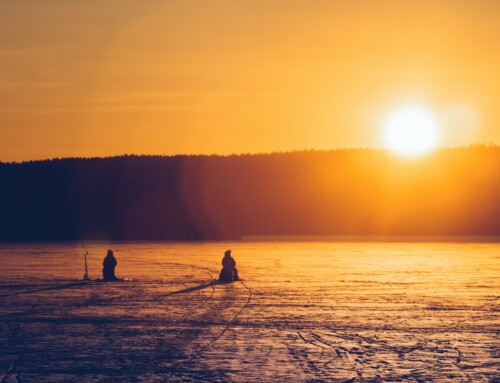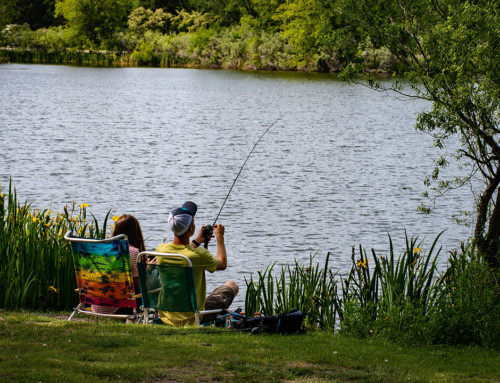Originally Published by Durhamregion.com, April 30, 2015
By Chris Hall
SCUGOG — A “serious decline” in Lake Scugog’s walleye population has prompted the Province to consider sweeping changes to future fishing seasons.
The Ministry of Natural Resources and Forestry has put forward two proposed regulation options to address concerns about the dwindling number of walleye in Lake Scugog. While there was an abundance of walleye in the lake throughout the 1970s and 1980s, their numbers started to fall in the 1990s and continue to drop, says the ministry.
“They’re not doing very well right now. They’ve declined over time,” said Ilsa Langis, a management biologist with the MNRF, on Monday, April 27.
According to the ministry, “the walleye population in Lake Scugog is in serious decline with the population now at an extremely low level of abundance.”
To address the declining population, the MNRF is considering two options:
• Closing the winter walleye fishing (Jan. 1 to the last day in February), but maintaining the current summer walleye season (the second Saturday in May to Nov. 15), which would align the Lake Scugog walleye season with other nearby lakes, or
• Close both the winter and summer walleye seasons for a long-term moratorium.
Either scenario would see existing seasons for other fisheries remain open.
A decision on the proposed closures will be made in the fall of 2015 and, if approved, would come into effect on Jan. 1, 2016.
Last week, ministry officials said it could take as long as two decades for the population to rebound.
“A long-term commitment is required,” said the MNRF’s Peter Mabee. “It may take 10 to 20 years to see improvement in the walleye population.”
But, stressed Ms. Langis, “recovery for the walleye may be difficult and it may not be possible.”
Chris Carr, who operates Scugog Ice Adventures and offers ice-fishing expeditions, acknowledged the proposed closures could impact his business “to a degree,” but agreed that something has to be done to help the walleye.
“There’s no question the walleye population is next to nothing at all,” he said. “But there’s just not that many young (walleye) left.”
Over the past few years, said Mr. Carr, customers have caught “very few walleye” and instead he said he’ll focus on branding Lake Scugog as a “world-class” crappie fishing destination if the closures go ahead.
“I don’t think it’s going to help,” he said of the closures. “We’re never going to have the same fishing as we did 20 years ago … but let’s close it for the summer and winter and see in three years and go from there.”
The Ontario Federation of Anglers and Hunters says it would like to see more information presented before a decision is made on the Lake Scugog walleye season.
“We’re not in favour of the proposals as they are without understanding what the costs could be and what the benefits would be. We’re not being given the full picture,” said Tom Brooke, a fisheries biologist with the OFAH.
He also warned of the potential for social and economic impacts for the Scugog area and questioned if other solutions, such as stocking or water-level management, could be utilized to help the walleye rebound.
“There’s likely options available that don’t limit fishing opportunities,” said Mr. Brooke. “We have to look at what the actual fallout will be of the closures. People need to understand definitely what they’re giving up and what they hope to see in return.”
It’s unlikely, he continued, that fishermen will support the MNRF’s plan.
“Anglers are hoping something will be done so the fishing can recover on the lake, but I’m not sure what they’re really hoping for is a closure,” said Mr. Brooke. “Personally, I’d be surprised if anglers will be looking for closures as the preferred option for the recovery of the fishing.”
The ministry says that keeping the status quo with the walleye seasons is not an option.
“The walleye fishery on Lake Scugog is at risk and a status quo option will not support improvement of the population,” said Mr. Mabee. “The ministry is considering options for a potential closure of the walleye season, for all or part of the year, to help restore the health of this fishery and ensure that it remains available for generations to come.”
Long-term studies of Lake Scugog are showing that the walleye population is in decline and that juvenile walleye are particularly scarce, explained the MNRF. A regulation change, said the ministry, is required to protect adults in the population so they can produce more walleye.
“Surveys on Lake Scugog indicate the relative abundance of walleye remains low and is made up of mostly older fish,” said Mr. Mabee. “Few small (young) fish have been observed in surveys that were produced from natural reproduction since 2007. The proposed change is intended to protect adults in the walleye population so they can naturally reproduce more walleye in the future.”
There are other factors affecting the Lake Scugog walleye population, including changes in the fish community such as the addition of bluegill and black crappie, which compete directly with young walleye for food and habitat and black crappie may also prey on young walleye, stressed the MNRF.
The theory that restricting the walleye season will have an economic impact doesn’t worry the Scugog Chamber of Commerce.
“It’s a specific species, as opposed to everything. (The ministry) is looking to preserve what they have there for future fishing,” said Kenna Kozak, who represents the Port Perry BIA and Scugog chamber. “They’ve been tracking it for some time and they know there’s a few issues and if this helps out, that’s a good thing.
“I don’t think it will have an impact on businesses. There’s a lot of other species to fish for.”
Also supporting the proposed closures are the Scugog Lake Stewards.
The walleye “have declined substantially and it’s good to see the Province taking steps to protect the fishery,” said Carolyn Hall, president of the stewards. “It’s gone too far and (the walleye) need an opportunity to recover.”
Long-term overfishing, combined with the introduction of competitive new species, are putting Lake Scugog’s walleye in danger, said Ms. Langis, the ministry management biologist.
As for the common suggestion of having the Province restock the lake with walleye, Ms. Langis shook her head.
“We’d like to see a naturally-reproducing fishery. We want to take a wait-and-see response to the (proposed closures),” said Ms. Langis, noting it takes about five years for a walleye to mature. “We need to see a couple of generations to see any improvement.”
She also warned that it’s unlikely many of the small walleye placed in Lake Scugog as part of a stocking program would survive, given the predators in the lake.
Stocking, continued Ms. Langis, would require between 200,000 and 300,000 fall fingerlings to be placed into Lake Scugog for five consecutive years. It would cost, she estimated, about $200,000 a year.
The Province, she added, only produces about 100,000 fall fingerlings annually.
“It would be very challenging,” she said of the stocking idea.
Feedback on the proposed changes can be e-mailed directly to FishPTBO@ontario.ca and comments must be received by the MNRF by Friday May 29.
To review the proposed changes, visit the Environmental Bill of Rights Registry at www.ontario.ca/ebr and search the number 012-3903.
Photo courtesy of Benjamin Priebe / Metroland







